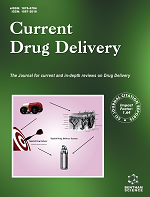
Full text loading...

The last strategy in targeted drug delivery systems is to deliver the anticancer drug to the tumor tissue to increase its therapeutic effect and minimize its undesirable side effects. In line with this goal in this research, the redox/pH-responsive disulfide magnetic nanocarriers based on PF127-NH2/L-cysteine-CM-β-CD-FA were synthesized and evaluated in a doxorubicin delivery system.
We effectively surrounded Fe3O4 nanoparticles with SiO2 using the sol-gel method, and then confidently coated them with oleic acid on Fe3O4@SiO2 nanoparticles.. In another reaction, a PF127-NH2/L-cysteine-CM-β-CD-FA was synthesized. The process involved modifying pluronic F127 (PF 127) with maleic anhydride and aminating it to form PF127-NH2. The obtained PF127-NH2 was attached to L-cysteine, followed by condensing with carboxymethyl-β-cyclodextrin and then functionalized by folic acid. Finally, PF127-NH2/L-cysteine-CM-β-CD-FA was coated on the surface of magnetic nanoparticles, and the resulting PF127-NH2/L-cysteine-CM-β-CD-FA was disulfidated to form the final nanocarrier network, which was abbreviated as LCMNPs-SS. The doxorubicin was used as a model drug and loaded into the LCMNPs-SS nanocarrier.
The LCMNPs-SS nanocarrier exhibited excellent properties for controlled release, with a well-defined release rate, a controllable level by an external magnet, and adjusting by DL-dithiothreitol concentration. The LCMNPs-SS nanocarrier could also break apart when exposed to an oxidant or a change in pH. This meant that the drug release could be fine-tuned in response to temperature, pH, or more than one stimulus.
These drug-carrying systems are valuable in reducing the dose of doxorubicin. High internalization of the synthesized LCMNPs-SS caused sped cellular uptake.